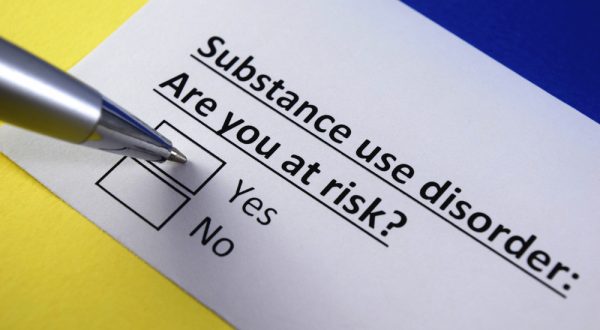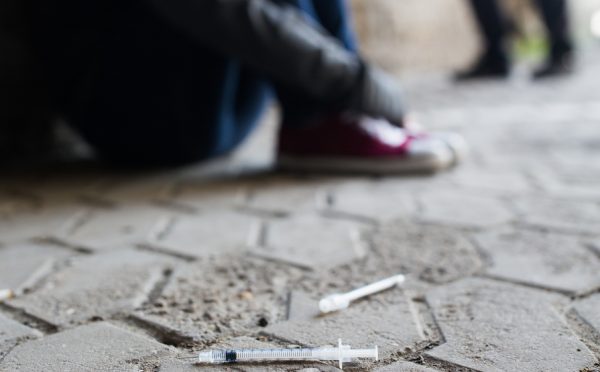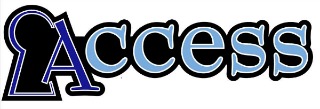Blog
Dual and Multi-Diagnoses
How Mental Health Impacts Addiction Treatment
Mental Health Disorders include depression, anxiety, post-traumatic stress disorder and borderline personality disorder to name a few. Communication Disorders are not as talked about when discussing co-occurring disorders, but these can have a profound impact on a person’s ability to effectively identify and clearly communicate their wants and needs. This can lead to or exacerbate their mental health or substance use disorders. The Access team, located in Frisco, Texas have specialized training in all of these disorders and can provide a customized treatment plan for you.

Why It’s Important to Treat Dual and Multiple Disorders
When treating substance use, we also treat the mental illness since they both work together to keep substance use active. Substance use makes the mental illness worse by increasing episodes of mental health symptoms and making them more intensive or longer-lasting. In addition, the burden of addiction adds cravings for the drug, tolerance to the drug and withdrawal symptoms. Experiencing both mental illness and substance use can be a vicious cycle, where symptoms of one disorder trigger the other.
Treatment must not only help people manage the symptoms of mental illness without abusing alcohol and drugs; it must reach a point where mental health symptoms do not increase the urge to get high or drink in the first place. Every individual is different, requiring a customized intervention.
What Causes Addiction?
Living with a mental illness increases the chance to develop a substance use disorder, but mental illness does not necessarily cause the substance use disorder, as each carries their own risk factors, prognostic factors, diagnostic features and impact on person’s functioning.
Dual disorders develop due to a combination of issues, with different origins:
⦁ Biology – Early childhood exposures, prenatal development, injury or any factor could alter the chemical makeup and function of brain toward drug and alcohol use.
⦁ Genetics – Having a family member who struggles from a substance use disorder and/or a mental health disorder increases the odds that the person develops their own version(s) of the disorder(s).
⦁ Trauma – Physical abuse, natural disaster, sexual abuse and war constitute traumatic experience that led to drug and alcohol use as a coping mechanism, as well as post-traumatic stress disorder, depression, anxiety, and other mental health disorders/symptoms.
⦁ Environment – Growing up where drug and alcohol use is prevalent and heavy may trigger development of a substance use disorder.
⦁ Life Experience – Chronic illness as well as regular, high consumption of certain drugs and alcohol may encourage the development of mental health symptoms.
Treating both the mental health disorder and substance use disorder is imperative because they can lead to early death and/or sudden death, whether through suicide or another cause. At Access Counseling Group, we teach patients, whether individuals or families, how to get back on track and address their needs in healthier ways, so they can rebuild relationships and maintain a strong support system for sustained recovery.
Can Access Cure Dual Disorders?
Unfortunately, we cannot state that we cure either mental health disorders or substance use disorders. We only treat the patient and the family with to provide stability and education on how to live with the illnesses while creating a successful and meaningful life. Our evidence-based therapies and treatments can help eliminate suffering and cope more effectively.
Substance Use Disorders
What Are Substance Use Disorders?
Substance use disorders happen when drug and/or alcohol use create impairment, such as health problems, disability and failure to meet tasks at school, home or work.
What’s Concerning About Substance Use Disorders
Substance use disorders are concerning because they often coexist with a mental health disorder. The most popular age group where people with coexisting mental health and substance use disorder fall is middle-aged or persons between the ages of 26 to 49. Young people between the ages 18 to 25 are most likely to experience serious mental illness and co-occurring substance use disorders. When treating substance use disorders that coexist with mental illness, it is imperative that treatment engages both disorders.

Common Types of Substance Use Disorders Alcohol Use Disorder (AUD)
As of 2014, more than half of Americans (176.6 million people) ages 12 and up reported being current alcohol consumers. A smaller fraction is said to have an alcohol use disorder—only 17 million people.
Alcohol consumption starts early. In 2019, 36.8% of high school seniors have been regularly consuming alcohol (according to N-SSATS report). Data indicates that people who begin drinking at the age of 15 or younger are four times more likely to develop a substance use disorder. Only 10% of people who waited for their first drink at age 21 developed a substance used disorder, which explains the importance of waiting to consume alcohol.
Different drinking patterns exist, each defined according to different regulatory/agency guidelines:
⦁ Moderate Drinking is up to 1 drink per day for women and 2 drinks per day for men.
⦁ Binge Drinking is drinking 5 or more drinks on the same day at least 1 day in the past month (SAMHSA) or drinking that produces a BAC of greater than 0.08 g/dL (greater than 4 drinks for women and 5 drinks for men over 2 hours).
⦁ Heavy Drinking is drinking 5 or more drinks on the same day (binge drinking) but on 5 or more days in the past month.
The consequences of excessive intake include developing an alcohol use disorder (AUD), which include diagnostic criteria such as problems controlling alcohol intake, sustained alcohol use despite alcohol-related problems, tolerance development, drinking that creates risky situations or withdrawal symptoms. An AUD can be mild, moderate or severe depending on the number of criteria met.
Cannabis Use Disorder
Marijuana is the third most used drug in the US following alcohol and tobacco and 35.2% of high school seniors were actively using pot (2019 N-SSATS report). Symptoms of cannabis use disorder include disruptions in functioning, tolerance development, cannabis cravings and withdrawal symptoms, including sleeplessness, restlessness, anger, nervousness or depression.

Tobacco Use Disorder
Tobacco use kills 480,000 people each year due to tobacco-related deaths (according to the CDC). Tobacco use and smoking damage nearly every organ and lead to respiratory disorders, lung cancer, stroke, heart disease and other illnesses. Current tobacco use varies by racial group; from most to least affected are American Indians/Alaska Natives, Native Hawaiians/other Pacific Islanders, whites, blacks, Hispanics and Asians. The 2019 N-SSATS report included high school seniors had a user rate of 24.0%.
Stimulant Use Disorder
Stimulants, historically used to treat a wide variety of medical conditions (such as obesity, ADHD and depression), constitute their own disorder. Most commonly abused stimulants are amphetamines, methamphetamine and cocaine. The signs of stimulant use disorder include stimulants craving, failure to control use, sustained use despite interference with significant obligations, use of more over time, tolerance, spending time obtaining and using them and withdrawal, including fatigue, sleep problems, increased appetite, vivid dreams or movement-related problems.


Hallucinogen Use Disorder
Hallucinogens are drugs that produce both auditory and visual hallucinations, a sense of detachment from oneself/one’s environment and time/perception distortions. Symptoms of a hallucinogen use disorder include hallucinogen cravings, continued use despite their impact on social functioning, use in risky situations, tolerance and spending time to acquire and use them.
Opioid Use Disorder
Opioids are drugs that suppress the perception of pain but also create mental confusion, drowsiness, euphoria, constipation and nausea. Methods for imbibing are varied, with snorting or injecting being more dangerous pathways. Buying off the street can be dangerous due to mixing of other drugs with heroin, such as fentanyl (50-100 times stronger than morphine). Symptoms of an opioid use disorder include the following: opioid cravings, inability to control or reduce use, sustained use despite interference with life tasks, use of bigger amounts over time, tolerance, working on obtaining it and withdrawal, such as nausea, vomiting, muscle aches, diarrhea, insomnia, fever and negative mood.

We’re Here to Help.
Whether you think you have a substance use disorder or you are concerned about a loved one, you should come in for a substance abuse assessment at Access Counseling Group. Your health and the wellbeing of your family depends on you stepping up and making the change you need in order to push your family toward a healthier, happier life. We offer several services and programs including family therapy, individual therapy and group counseling. What’s more, our approach to treating substance use disorder in Frisco is never the same for every affected individual. In order to truly heal a person, we must address the co-occurring disorder(s) as well as the general motivation for pursuing drugs and/or alcohol in the first place. We have helped hundreds of people heal from the devastating effects of substance use disorder, and we can help you too. If you have any questions about our programs, please need to contact us.
**The 2019 N-SSATS report included 15,961 substance abuse treatment facilities, which reported a total of 1,460,706 clients in substance abuse treatment on March 29, 2019. The survey response rate was 91.4 percent overall.
